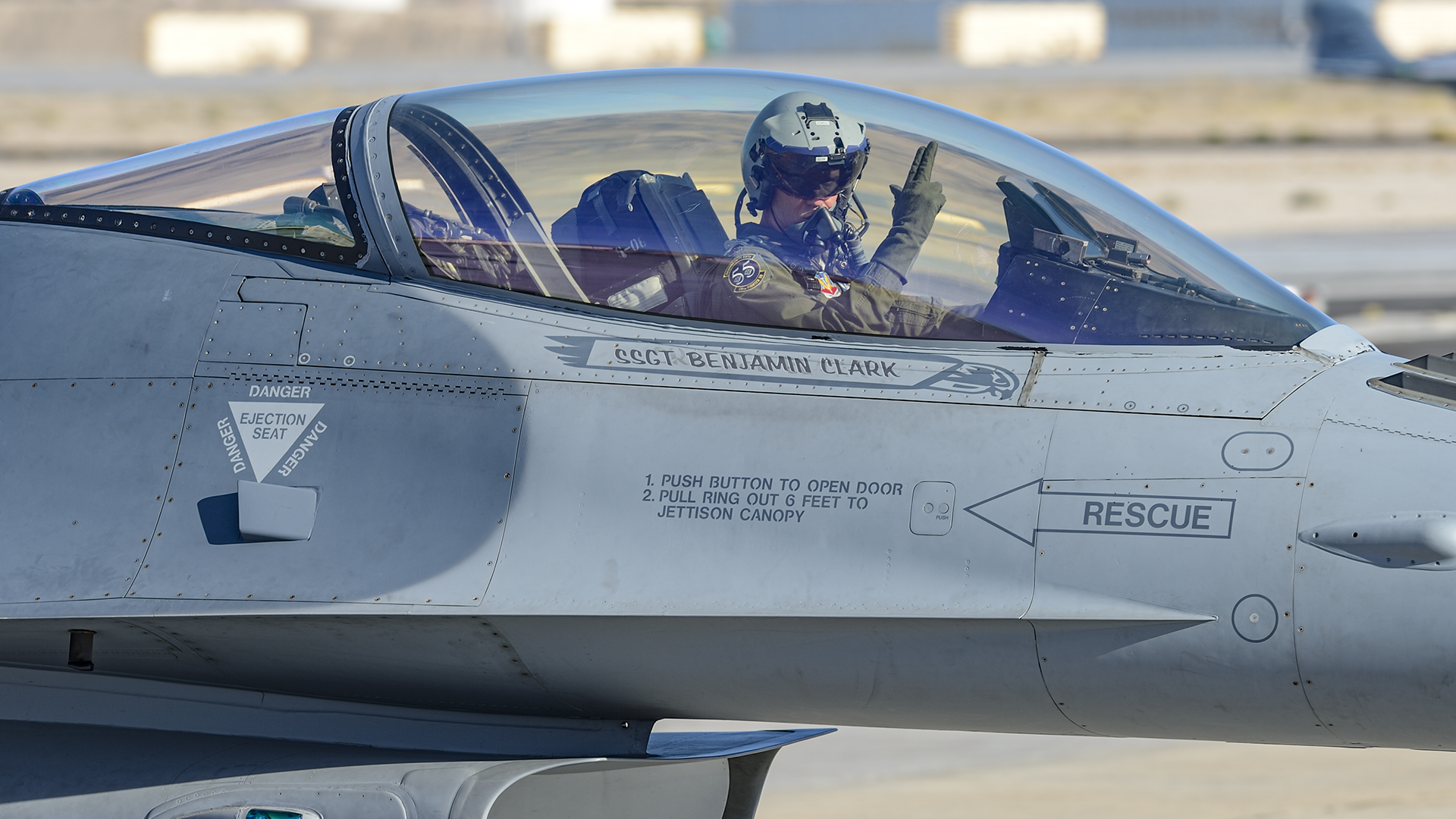Ukraine still has not received a solid offer for donated Western fighter jets to improve the capabilities of its air force. However, of the types available, it seems one has been consistently the forerunner, and understandably so — the F-16. This is primarily due to the type’s availability, ease of support and sprawling logistical infrastructure, the capacity to train its pilots to fly it, and its highly adaptable multi-role capability. But just how feasible is it to get pilots trained not just to fly, but also to fight in the F-16?
With a mountain of inaccurate claims and bold but hollow statements dominating this hot topic, we break down the harsh reality.
The need for speed
With the war in Ukraine nearly a year-long reality, there have been enduring calls to supply the Ukrainian Air Force with Western fighter jets. Ukraine’s brave fighter pilots continue to operate on a daily basis, coaxing results out of a small fleet of MiG-29 and Su-27 fighters, and Su-24 and Su-25 attack aircraft, sometimes with the novel employment of Western weapons such as the AGM-88 High-speed Anti-Radiation Missile (HARM). However, Russia maintains both a numerical and technical advantage in the air domain.
Dating back to March 2022, there have been various pleas from the very top of the Ukrainian leadership for Western fighter jets to replenish, recapitalize, and enhance its Soviet-era fighter fleet. Fast forward to today and scores of other advanced Western-supplied weapons now pour into the country. Yet, to date none of the potential fighter options have been acted upon — neither additional Soviet-era or Western types have been provided.
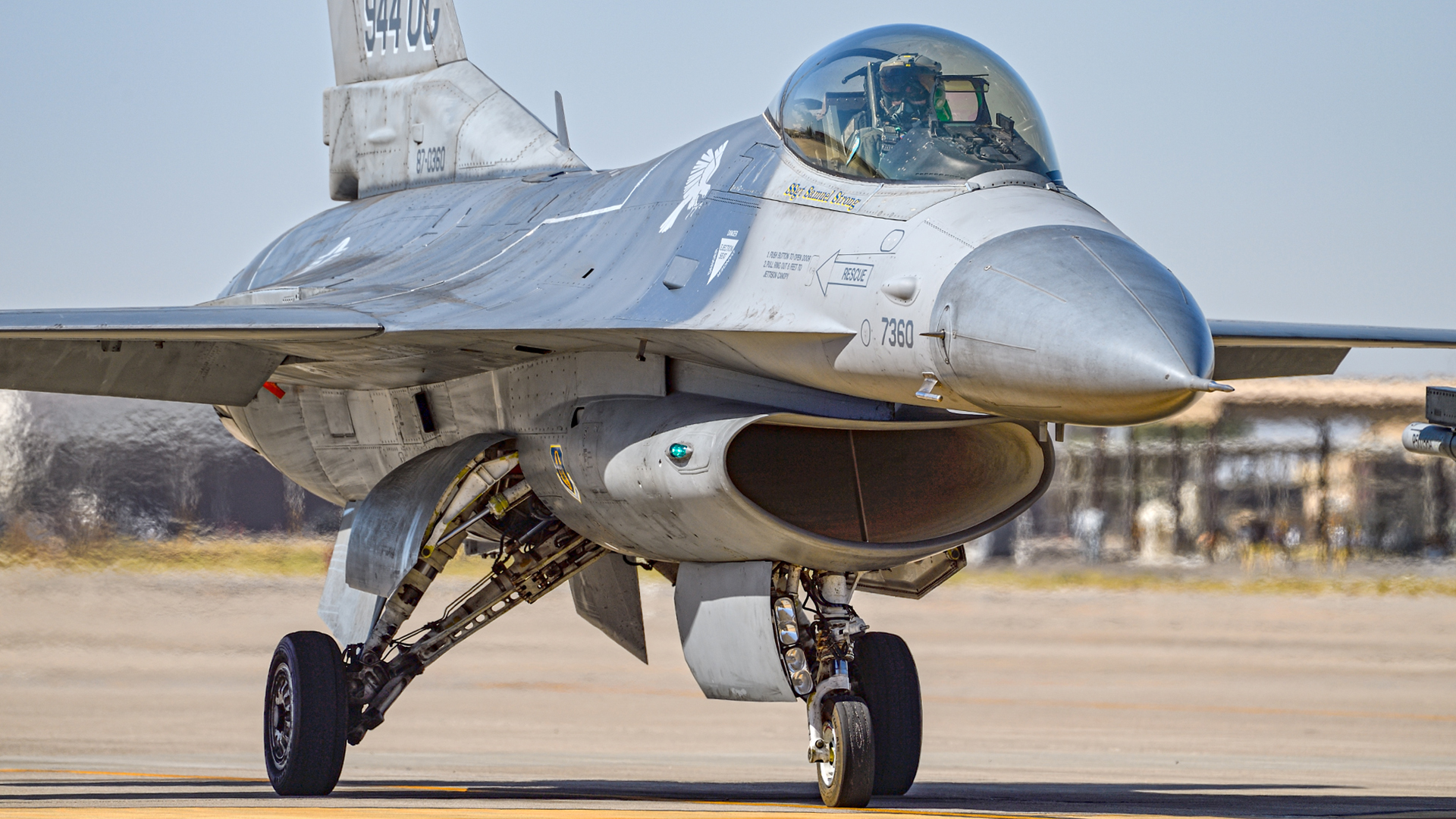
Ukrainian pilots and some military leaders in the country have made it clear that their preferred option is for secondhand F-16s to be supplied to Kyiv. The Viper is seen as a realistic choice considering all the qualities mentioned earlier.
“In the case of the F-16 you have a lot of options for different training programs, different electronic countermeasures, different engines, different everything — it’s like Lego,” Ukrainian MiG-29 pilot “Juice” told The War Zone in December 2022. “The technical capabilities are very close; in general, I don’t say that the F-16 is better as an aircraft itself, but it may be the most realistic choice for Ukraine, considering capability, availability, affordability, and most importantly sustainability.”
Col. Yuri Ignat, the chief spokesperson for the Ukrainian Air Force Command, has said that two 12-aircraft squadrons of aircraft, plus reserves, would be sufficient, at least at first, to help turn the tables against Russian air power.
On January 24, 2023, Ignat was reported as saying: “The type of aircraft, which is likely to be provided to Ukraine, and the corresponding terms of [personnel] training have already been determined.” You can read more about this development here. It has even been stated that Ukraine is already working to upgrade certain airfields to accommodate the less hardy Western fighter types in anticipation of getting some.
Despite President Biden’s firm “no” to the U.S. transfer of F-16s to Ukraine last month, the possibility appears to be gathering momentum. While the U.S. government might not be willing to donate F-16s itself, it could approve another user, such as the Netherlands, to do so. And, of course, the F-16 could be offered alongside another type, but consolidating to just one type would be very helpful for training and sustainment in the long run.
So, if the U.S. government does eventually sanction the transfer of F-16s to Ukraine, what would that entail?
Making a Viper driver
If the decision to supply jets is made, the F-16 does seem to be an ideal solution. The Viper has a well-established logistics footprint in Europe, and it wouldn’t be a big leap to extend that eastwards toward Ukraine. There is also an increasing number of used F-16 airframes available, albeit with a long list of interested parties including contract adversary air companies. However, if there’s a political will, they aren’t going to be that hard to source.
Yuri Ignat recently told Air Force Magazine that Ukraine has at least 30 pilots with sufficient English-language skills, as well as maintainers, ready to travel to the United States for training if an F-16 deal can be agreed upon.
“To learn the first stage of takeoff and landing and flying from point A to point B, it will take a few weeks, but to learn how to fight on it, to learn how to use missiles, we will take around six months,” Ignat said.
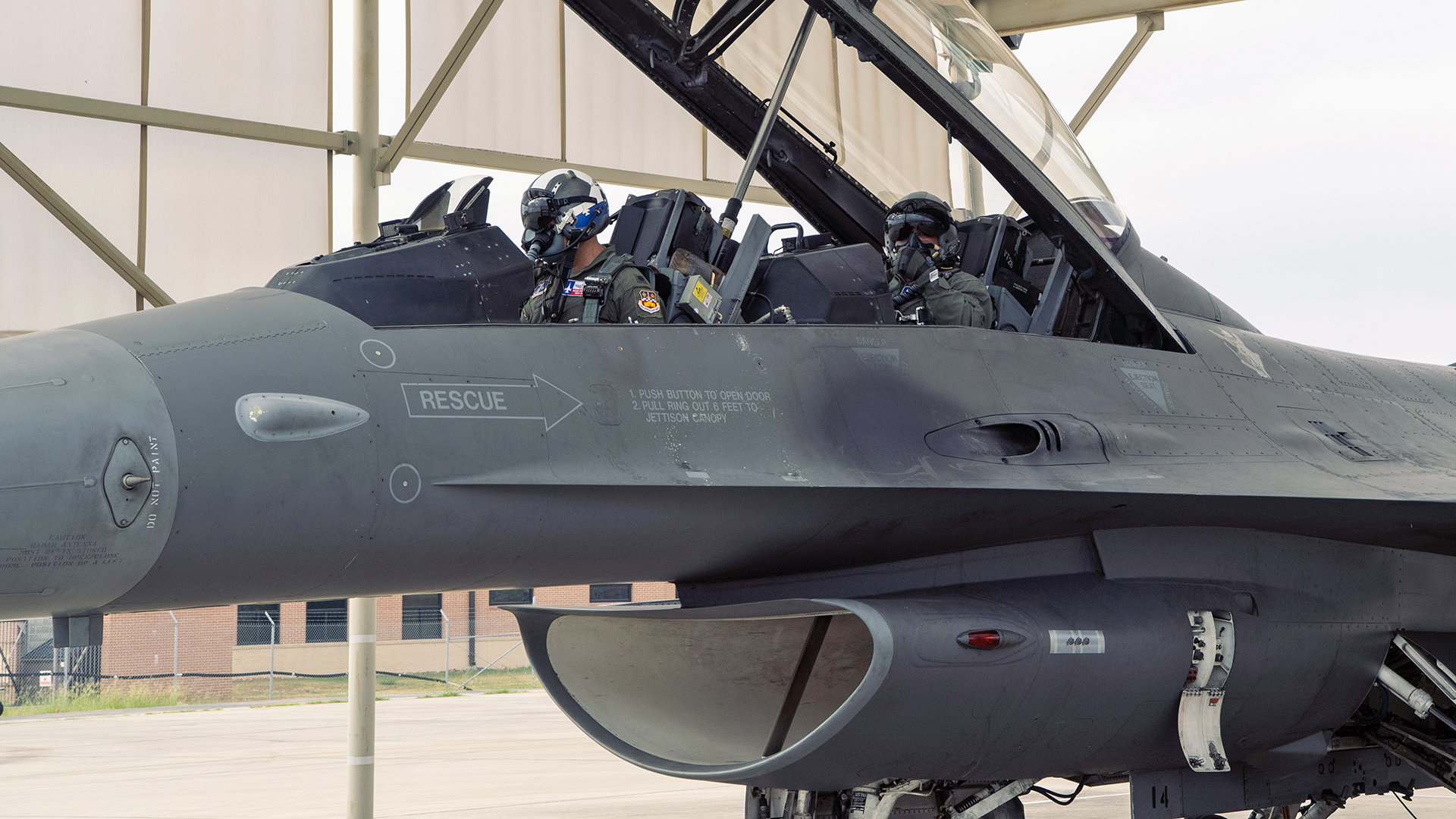
The F-16 is relatively easy to operate safely, so it’s not too high a barrier to cross for the Ukrainian Air Force. An F-16 pilot told The War Zone: “In a matter of months it’s possible for a non-familiar aviator to be reasonably safe in a jet like the F-16. The systems are easy to operate, the jet is easy to fly, and it’s very intuitive to learn. The Viper is an easy transition for an experienced fighter pilot from a pure flying perspective, no matter what type they are coming from.”
“You turn it on, you push the throttle up, you go and fly. The flight control system neutralizes any big mistakes, you really can’t over-stress the jet unless you’re really trying to. You can’t take it out of controlled flight easily — there’s a lot of instances where it takes care of you with a layer of safety to where even a non-proficient operator can fly safely — some including enhanced ground proximity warning systems (EGPWS) – so that’s the first bridge they have to cross.”
The full F-16 Basic Course, also known as the B-Course, is typically a nine-month process for pilots fresh out of pilot training. Broadly it consists of academics, time in the simulator, and live sorties. In addition to B-Courses, the Formal Training Units (FTUs) also run transition courses for pilots with experience in other jets — these are typically far shorter than the full B-Course.
In the case of the B-Course, an initial four weeks of academics teaches students about the systems of the F-16 and emergency procedures. This is followed by around eight simulator sessions covering basic instrument flying and hands-on experience of the various emergency procedures before they progress to the two-seat F-16D for four live flights before a first solo mission.
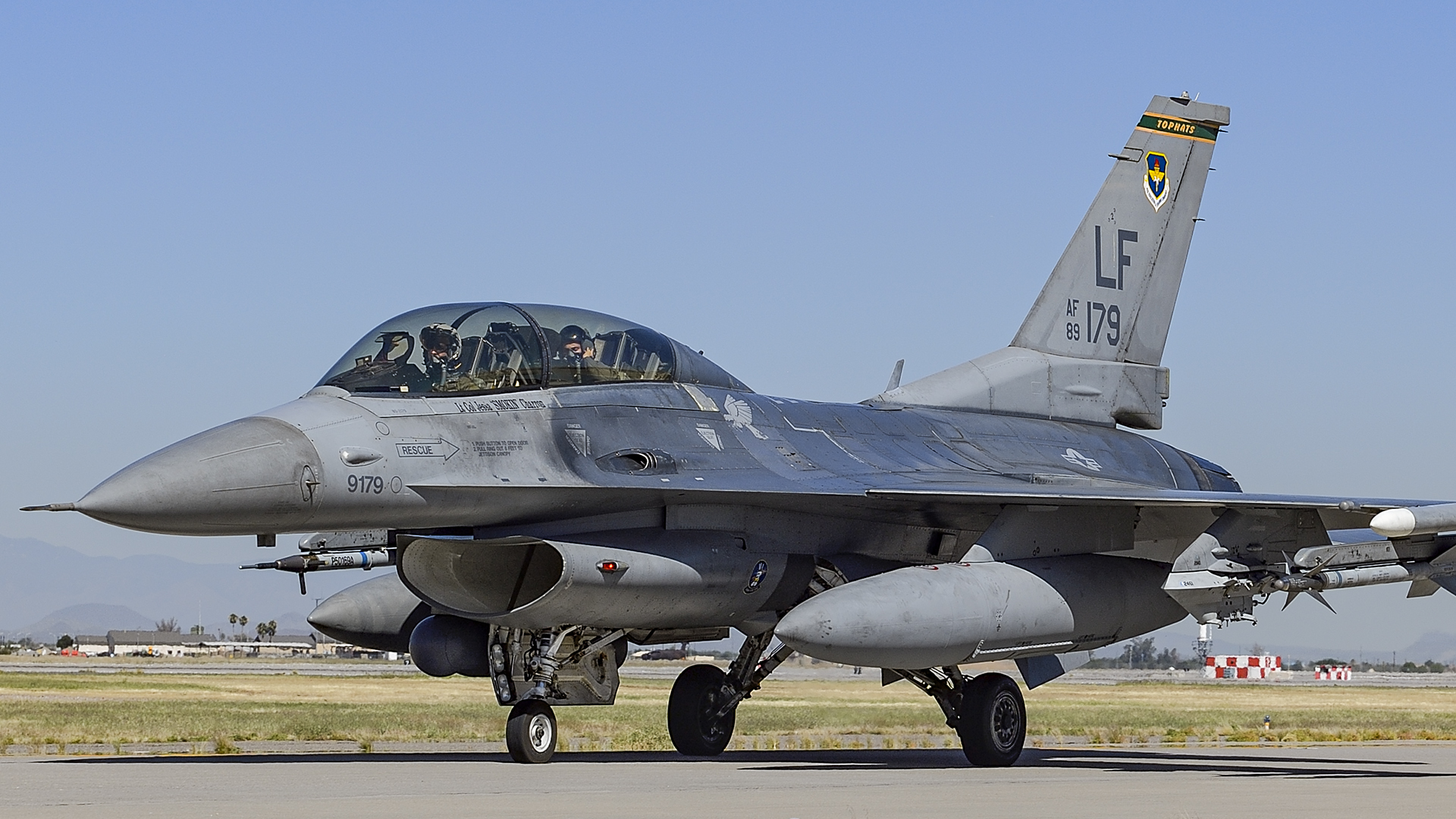
The following sorties are designed to build experience ahead of a check ride with an instructor, during which the students are required to meet standards for instrument flying and handling emergencies. At this point, the new pilot is considered to be qualified to fly the F-16 in all weather conditions and can move on to night flying with night-vision goggles (NVGs).
Students step through an air-to-air phase including basic fighter maneuvers, air combat maneuvering, and tactical intercepts before they get into the air-to-ground phase with low-level flying, and surface attack tactics. There are around 60 sorties in the course, divided between the transition, air-to-air, and air-to-ground phases.
For experienced Ukrainian fighter pilots, a type conversion to the F-16 could resemble a typical FTU transition conversion course, known as TX. This is traditionally applied to aircrews who are moving from one type of fighter aircraft to another, or perhaps senior officers who need to fly multiple types. A tailored transition course, that incorporates a grounding in Western systems and standard operating procedures (SOPs), could be the type of syllabus that a future Ukrainian F-16 pilot coming from the Fulcrum or Flanker would need.
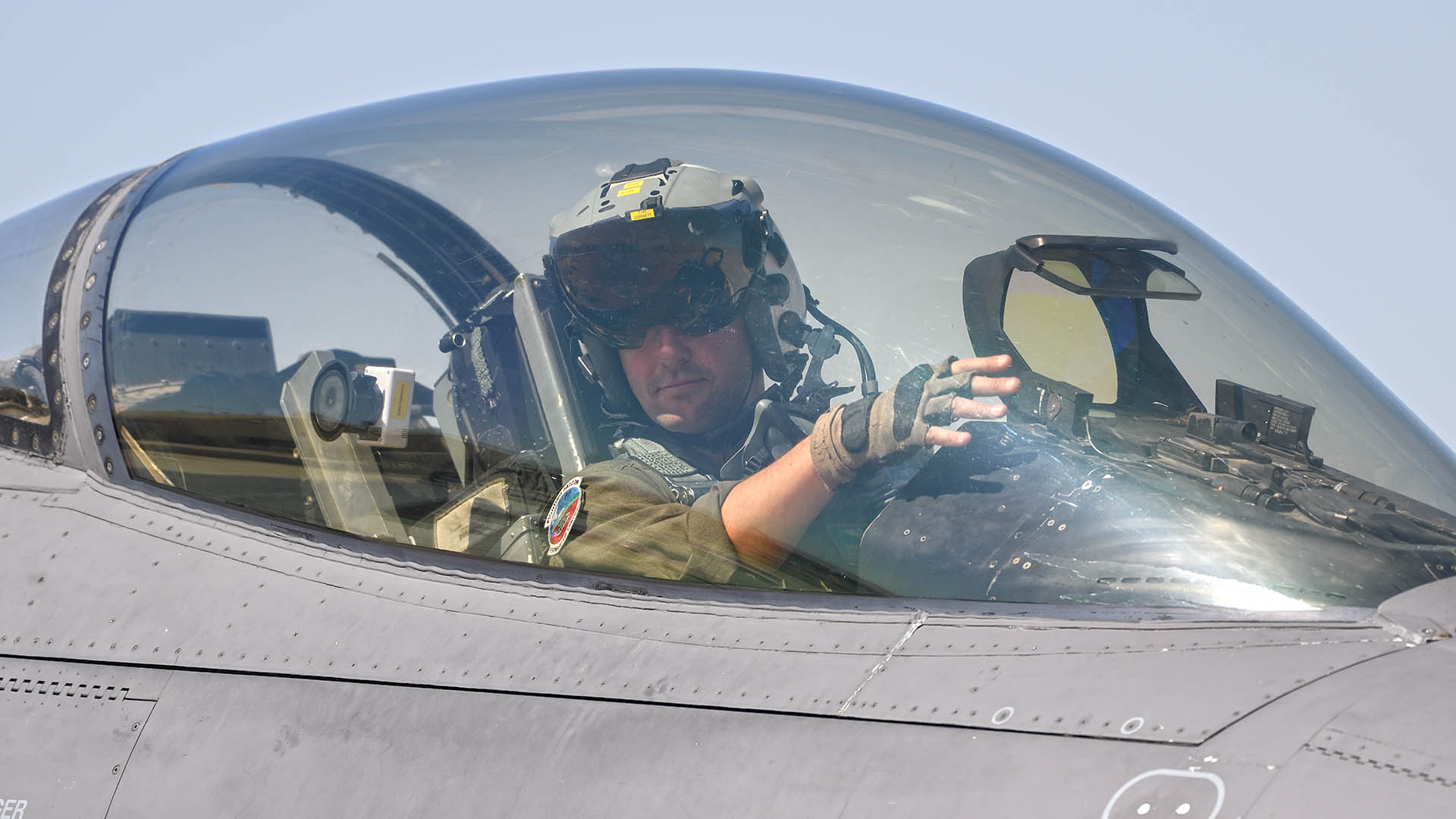
“For a pilot with around 500 hours experience in a Western fighter, but that has never previously flown the F-16 — someone transitioning from the Hornet for example — without any breaks, working weekends, etc, they need 69 days to learn everything to safely employ the Viper in air-to-air and air-to-ground roles,” commented an experienced F-16 instructor.
“That’s assuming they speak good English because that’s the language we teach in. Those 69 days include six flights learning to fly the jet and land it. About 15 flights of air-to-air, but if they’ve done a lot of this before you might get that down to 10. The between six and nine air-to-surface missions, which would include a basic ability to employ laser-guided bombs [LGBs] and GPS-guided Joint Direct Attack Munitions [JDAMs]. That would give them a basic, wingman-level understanding, and that’s assuming they are already familiar with the complex weapons such as the AIM-120 AMRAAM [Advanced Medium-Range Air-to-Air Missile].”
“They would also need to take in 210 hours of academics and 10-20 simulator events. You can’t do that fast — even doing two sims a day means 10 days straight. You can’t do that kind of thing fast. So, those 69 days would mean the pilot could potentially employ the jet safely in a tactical training environment. Flying in combat is a whole different story.”
“Going into combat against a Su-35, even a Su-27 in contested airspace — now you’re talking about years of experience. You can’t do that with a brand-new guy who has seen everything once! You can have all the capabilities of the jet, but if the pilot doesn’t know how to use it correctly, then that’s useless. So for a pilot coming from a MiG-29, having to learn a brand-new PVI [pilot-vehicle interface] where everything looks different, use weapons that they’ve only ever read about, to give them three-months training then toss them into combat — that’s a tall order!”
“The MiG-29 to a Block 50 or Mid-Life Upgrade Viper isn’t a big step in performance, but it’s a huge leap in technology — the weapons and avionics. Even after 69 days of intense training, that’s only a wingman qual [qualification], so who is going to lead the mission? Do you just send them off as a rogue single-ship to try and shoot down anything with more than one vertical tail? To be super effective, you at least need a four-ship, and to lead that needs at least a year of intensive training — then you can crush the opposition.”
“The answer initially would have to be based on building a new syllabus based on Ukraine’s specific needs and the threat scenario, and to then take that into combat would need anywhere between six and 12 months of training. It would still be risky, but that might outweigh the rewards.”
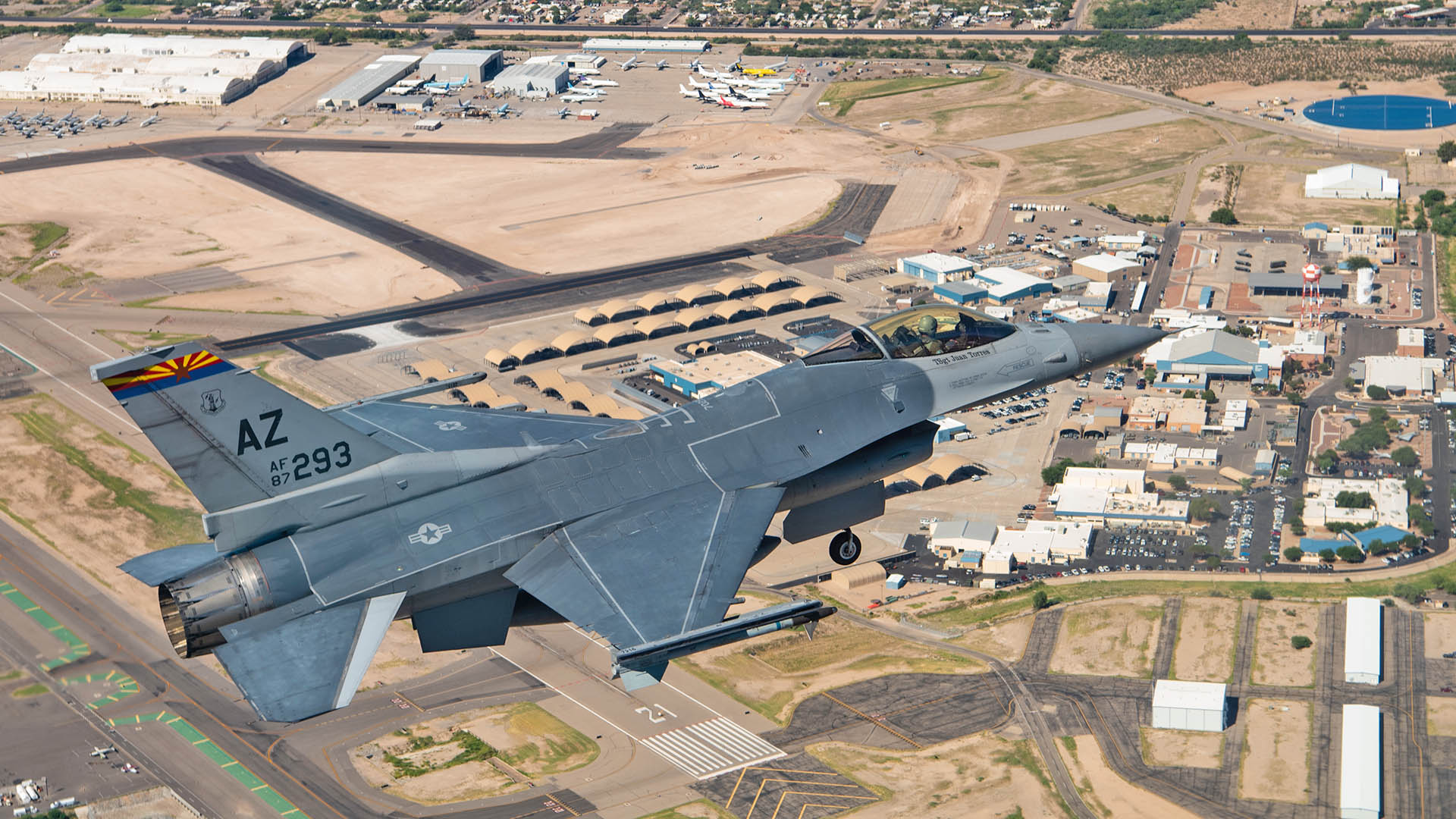
Many international F-16 operators choose to send their pilots to the U.S. for initial qualification training. Indeed, Eastern European pilots from Poland and Romania conduct F-16 training with the Air National Guard’s 162nd Wing at Morris Air National Guard Base in Tucson, Arizona. This could serve as an ideal venue for conversion training for Ukraine’s aviators.
Another F-16 pilot commented to The War Zone that the U.S. Air Force could easily squeeze six to 12 Ukrainian pilots into an existing pipeline at a Viper FTU in relatively short order and give them a targeted syllabus that provides the specific skills they will require in theater.
The desired combat roles for Ukrainian F-16s would need to be carefully considered. A modern, single-seat, multi-role fighter might be easy to handle from a pure piloting perspective, but the many mission sets available means a commensurately high workload in the cockpit. It can take many years for an air force to stand up a fully-capable, multi-role fighter squadron — even with a proven type such as the F-16.
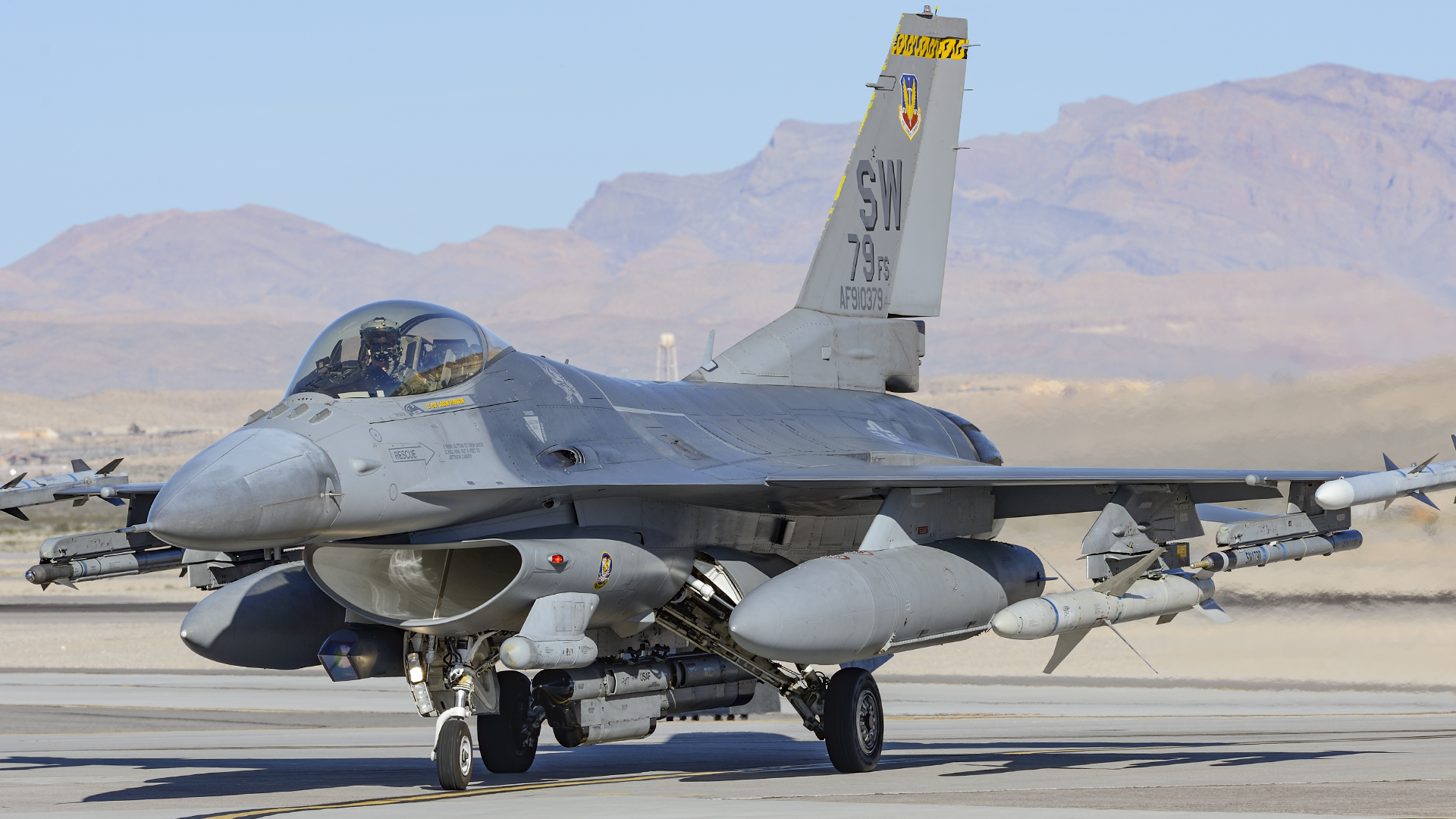
Adding an advanced Western air-to-air missile like the AIM-120 AMRAAM to the equation would require pilots to be taught some significant new skill sets. “Now you’re talking about radar work, long-range employment, targeting, and target identification. That’s all significantly different in a fourth-gen Western platform and in a former Soviet Union platform. The cockpit displays are presented differently, the missile kinematics and the way Russian and Western missiles work are very different.”
The ultimate goal is key
An important question relates to how Ukraine would actually benefit from receiving fourth-generation fighter aircraft. What would be the military gain, and what could Ukrainian F-16s actually achieve?
One former F-16 pilot told The War Zone: “When it comes to fighter employment in Ukraine, we have to ask what they are actually looking to do. Reflecting on the California Air National Guard’s historical close partnership with the Ukrainian Flankers, even before the conflict kicked off, a majority of Ukrainian missions were flown at low-level, down below 1,000 feet.”
“Now with a ludicrous surface-to-air missile [SAM] overlay across Ukraine, low-level flight is realistically all that Ukrainian fighter pilots can execute without incurring a huge risk, regardless of what non-stealth platform they are employing. In Ukraine right now we are talking about operating in an environment that is completely different from the norm.”
While fifth-generation stealth fighters would have greater freedom to operate in such highly contested areas, any incoming Western fourth-generation platforms would be supremely hamstrung by the resident SAM network. In this sense, it would be the same as Ukraine’s current fighter inventory.
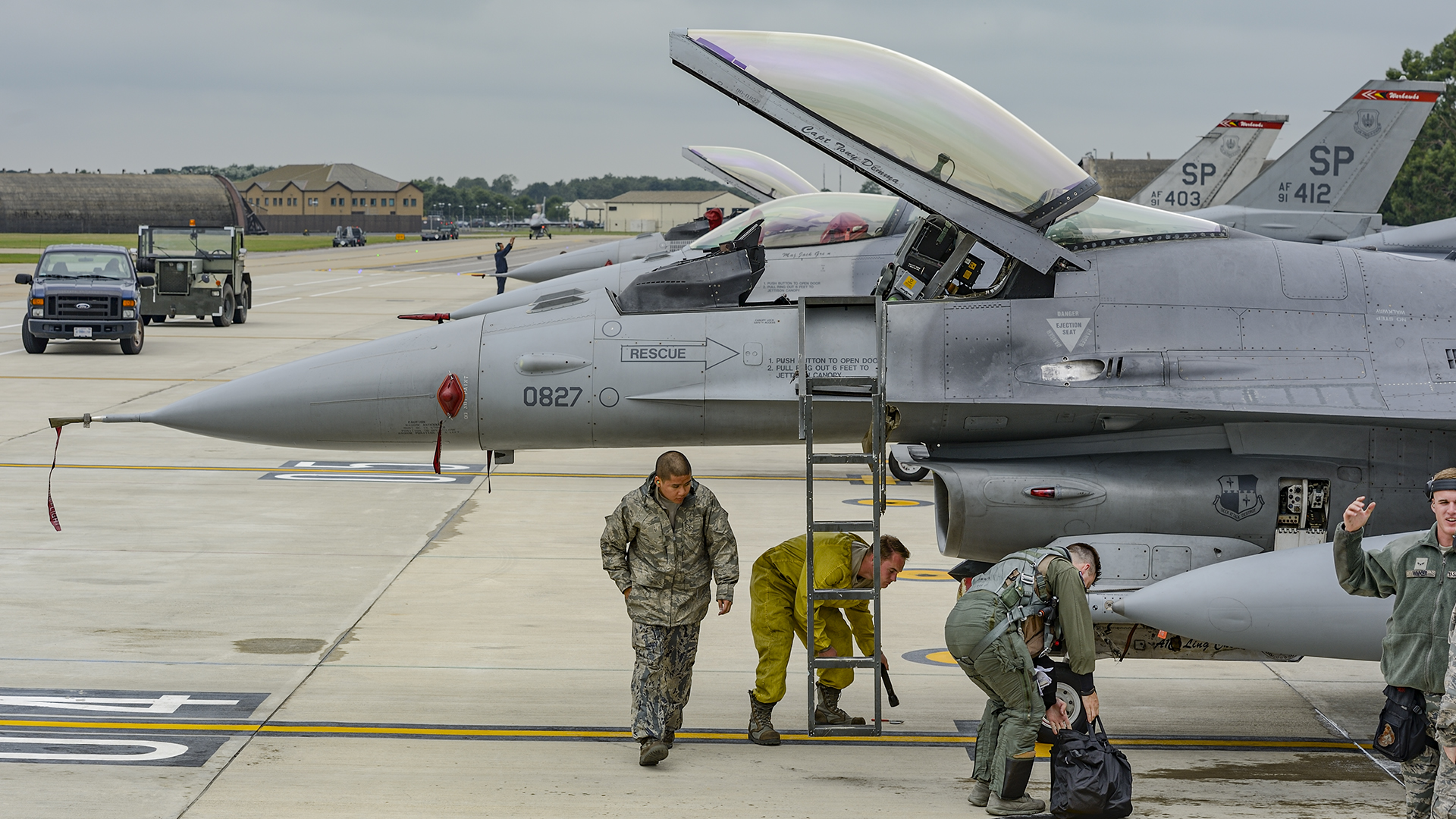
“I see it increasingly likely that the entire theater will continue to become an anti-access, area-denied environment where it’s increasingly difficult for fixed-wing assets to gain effect. With advanced ‘double-digit’ SAMs over the border in Russia and Belarus, and Ukraine set to receive Patriot missile batteries from the U.S. it’s likely to be low-level employment that endures, and this is potentially better suited to rotary systems, albeit still at the mercy of MANPADS [man-portable air defense systems] and shorter-range systems.”
Russia isn’t thought to be flying regular fighter or bomber patrols over Ukraine itself, instead opting to fly combat air patrols (CAPs) over Russian territory and strike from the safety of very long ranges because of the air environment over Ukraine, thereby accepting the targeting uncertainties and imprecision of its weaponry. Russia is willing to lob long-range cruise missiles toward a general area, and with employment profiles like this, significant collateral damage is inevitable.
According to a recent report from the Royal United Services Institute (RUSI) think tank, Russian fighters including MiG-31BM and Su-35S typically provide air coverage of zones over the operational area, however, their CAPs are typically located over Russia and Russian-held territory, including Crimea.
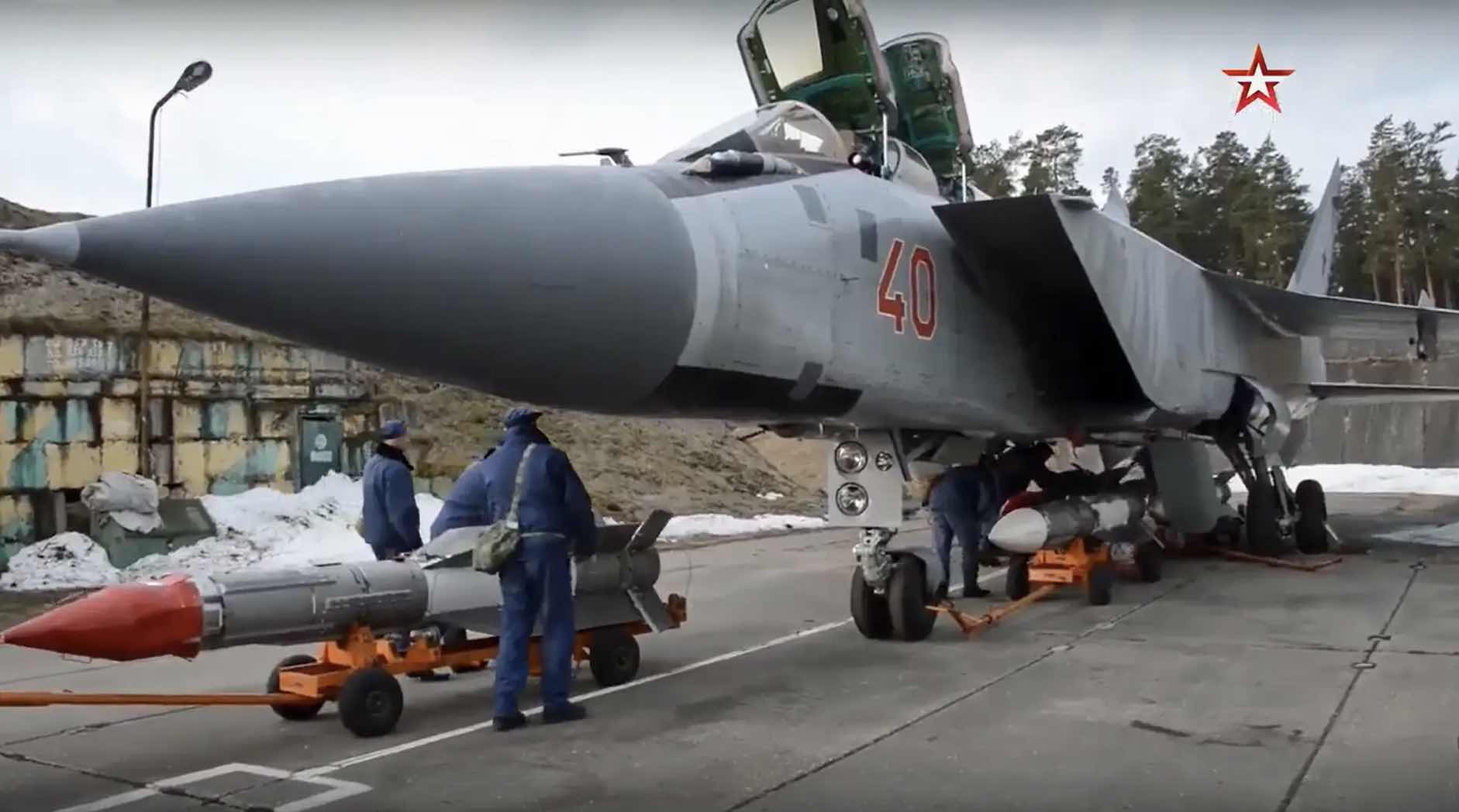
The tactical game plan surrounding the provision of new jets to support Ukraine will have a major impact on the possible supply of F-16s. While Ukrainian officials say they need a fighter with a good radar and missiles like the long-range AMRAAM to help keep Russian fighters and bombers at bay, U.S. officials would need to weigh up the stakes of taking such a significant move and question if air power still has a significant role to play in this theater. It’s possible that the air domain might have less influence going forward in Ukraine, especially as the anti-access threat grows and ground forces battle in urban areas where fixed-wing airpower is unlikely to yield a significant impact.
Ukraine has already received Kongsberg-Raytheon National Advanced Surface-to-Air System (NASAMS) air defense systems, which are armed with AMRAAMs. You can read more about Ukraine and the AIM-120 for NASAMS and what it means in this past piece of ours.
While a fighter equipped with AMRAAM would offer Ukraine even greater defense against Russian long-range missile and drone attacks, Ukraine has stressed any new fighter also needs AMRAAM to counter Russian Su-35S and MiG-31BM fighters with their huge radar ranges and longer-range air-to-air missiles, such as the potent R-37M long-range air-to-air missile.
“Our priority, first of all, is to shoot down their attack platforms above the front lines, not just hunt for their fighter jets, because you need a lot of resources for that,” says “Juice.” “First of all, we need to cover our regions, after that to cover our ground forces, and after that, of course, we can try to just have some fun with other fighter jets. It will be a great challenge. But still, new hardware means new tactics, new doctrine for all operations, and I hope all that will help us to succeed and that the Russians won’t feel comfortable even in their own airspace.”
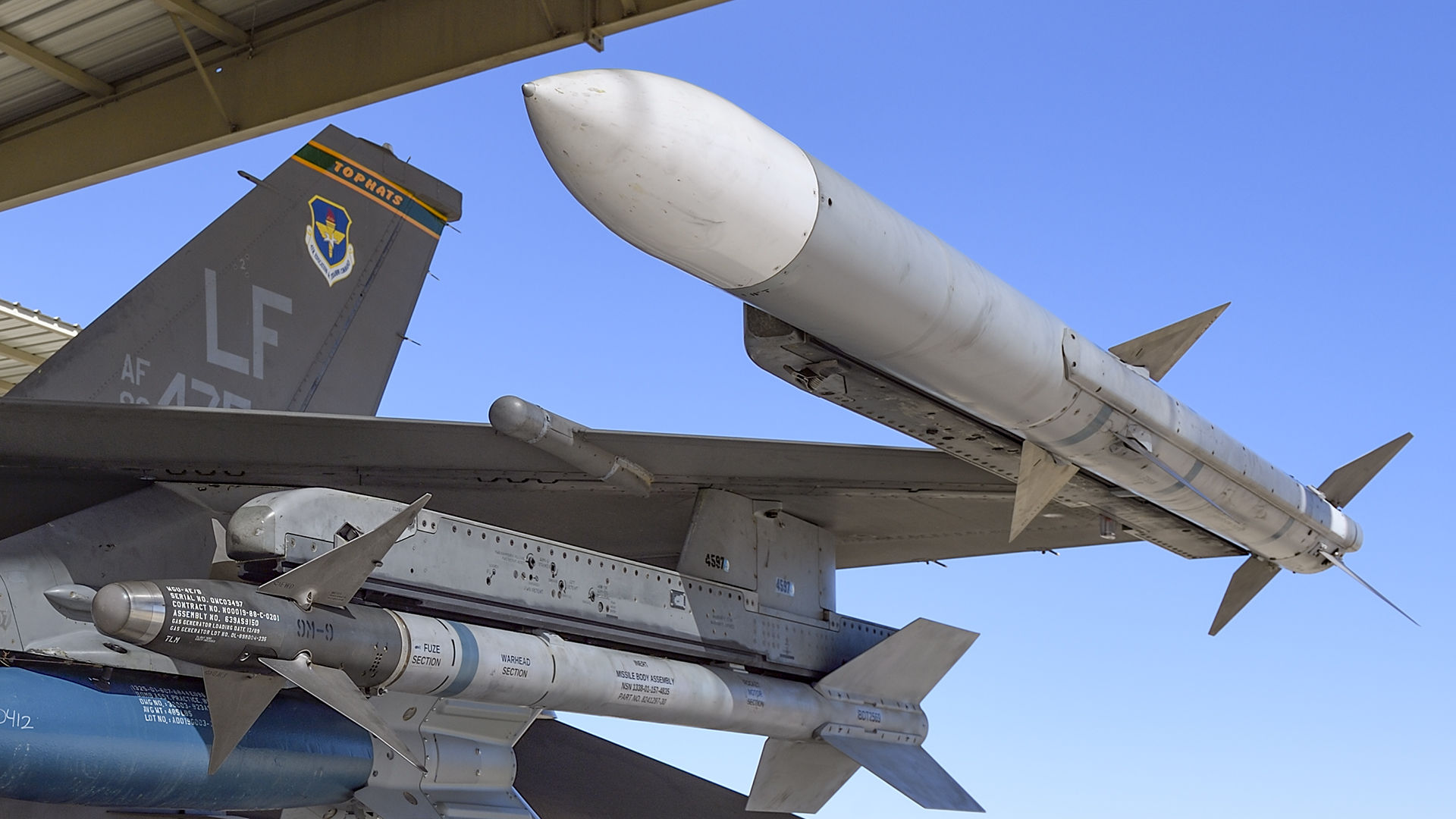
A big question surrounds which of the wide range of F-16 capabilities Ukraine would actually get. AMRAAM and smart weapons would clearly be a massive capability leap for the air force, but if pegged back to flying low-level missions at long range from the air threat, even AMRAAM could be impotent. “I see AMRAAM as a potential political sticking point that’s even greater than the Patriot missile transfer,” says one F-16 pilot. “The security around it and its extremely long-range employment mean there’s a politically very high bar for this weapon in terms of transfer. Combine that with the way Ukraine’s pilots are operating, and it could mean that the political investment in donating that weapon simply doesn’t stack up.”
The Biden administration remains wary of allowing sensitive U.S. technology to fall into Russian hands on the battlefield. But once again, Ukraine already has AIM-120 and is actively using it, although not in the air-to-air combat environment, which has sensitive tactics and operational capabilities tied to it.
The U.S. has limited some F-16 export customers to the AIM-7 Sparrow, the radar-guided missile that AMRAAM ultimately replaced. Despite receiving brand new Vipers, Iraq’s jets have a downgraded capability that does not include AMRAAM. Long-term F-16 operator Egypt also still lacks AMRAAM on its Vipers. This is due to a number of reasons, from technological to parity concerns in the region.
In addition, there’s a long-running discussion over giving Ukraine Joint Direct Attack Munition (JDAM) GPS-guided bombs. This is also likely to play heavily in the F-16 conversation as a platform that counts these precision air-to-ground stores as among its most important smart weaponry. As it sits now, Ukraine is getting JDAMs for an unknown platform. This would give Ukraine potentially up to a 2,000 pound guided weapon capability when paired with an aircraft, and does provide limited standoff range.
There are many other weapons the F-16 can deploy — that is perhaps its greatest advantage. This is especially true for Ukraine as it could have new capabilities provided rapidly as its allied partners see fit, including the introduction of standoff ground attack weaponry. Ukraine is also already getting Small Diameter Bombs (SDBs) in a rare ground-launched form. F-16s could deploy these as well in a very flexible manner, although the previously discussed dense air defense situation over Ukraine that limits operating altitudes close to the front also would degrade these glide bombs’ range significantly.
One could argue that as Ukraine becomes more proficient in the F-16, they could use the type to degrade Russia’s looming anti-air umbrella in certain areas, at least for pointed combined operations. Ukraine already has the AGM-88 High-Speed Anti-Radiation Missile (HARM) which is being used in an improvised manner on the country’s MiG-29 and Su-27 fighters. An F-16, with its modern avionics suite and sensor systems, can make far greater use of this weapon. But, once again, this would likely not be in the immediate future for an F-16-equipped Ukrainian Air Force.
Regardless, with all this in mind, the conversation is therefore far wider than just being F-16, yes or no? Can Ukraine expect to receive F-16s with Mk 82 ‘dumb’ bombs and heat-seeking AIM-9 Sidewinders, or F-16s with AMRAAM and standoff weapons?
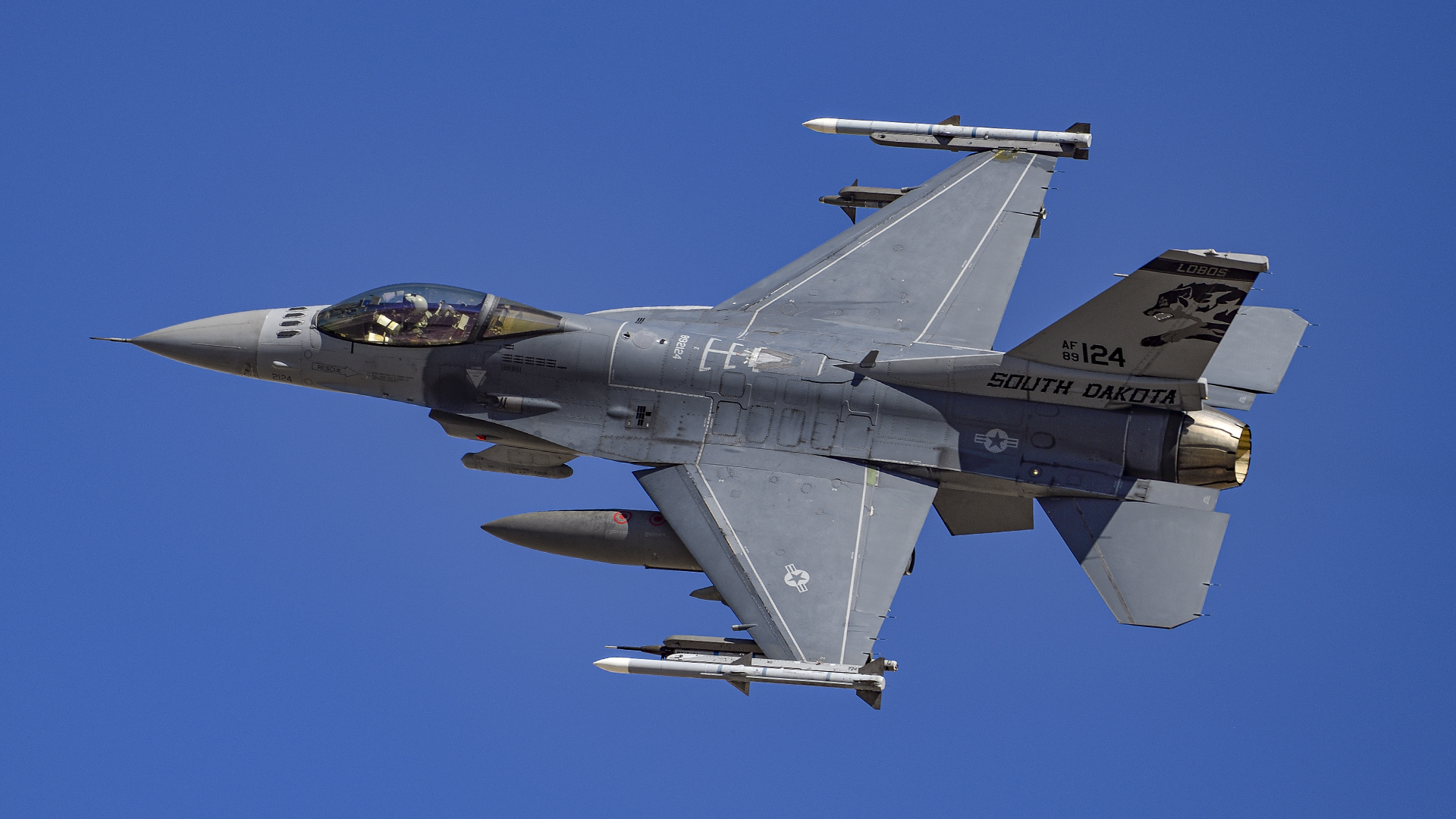
Reality bites
Continuing to operate MiGs and Sukhois and up-scaling those fleets might actually offer advantages versus bringing in Western jets. Operating similar types to Russia helps to complicate the air picture. There would be very little added training burden at a time of high-tempo operations, and the logistics chain is already partially in place.
Ukraine has also made repeated calls for additional Russian-made fighters to boost its dwindling fleet. While there are no obvious sources for Su-27s, there have been repeated efforts to obtain MiG-29s from Bulgaria, Poland, or Slovakia. The transfer of these aircraft with retrofitted capabilities, such as the addition of the AGM-88 HARM as has already been achieved, or somehow adding AMRAAM, has been floated as one potential way to boost Ukraine’s hard-worked tactical air arm. But “Juice” has noted that doing so makes little sense, “It’s too long and too expensive and too complicated to integrate any air-to-air systems on an old jet.” In addition, the active-radar missiles will be poorly matched with the radars that equip their Soviet-designed jets even if it could be done.
Still, this won’t provide Ukraine with a fighter for its long-term future and does kick-the-can down the road on what is likely an inevitable outcome — Ukraine flying Western fighters. It also does nothing to deter future Russian aggression in the long term.
If Ukraine does get the go-ahead for Vipers, its pilots could ultimately spin up quickly via a very condensed training syllabus specifically designed to cover the basics of employment. This would not need to cover the entire multi-mission spectrum of the modern, upgraded F-16.
If Ukrainian pilots were literally taught how to fly the jet, with a quick look at some basic air-to-ground applications — probably using unguided weapons initially — and a basic grounding in the Sidewinder for air-to-air, they could probably be deemed proficient in a couple of months. But this would not give Ukraine what they are asking for. That would take longer and would be part of a greater fighter transition that would occur over many months if not years, not a handful of weeks.
So, for the F-16 in Ukraine, there is certainly a way. But is there the will?
We will find out one way or another.
Contact the editor: tyler@thedrive.com
